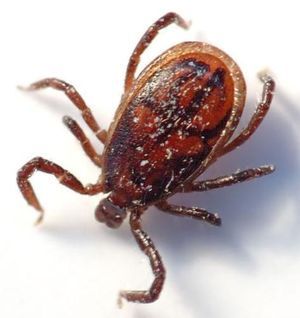HARLINGEN — With new properties being added to the Live Oak County tick quarantine zone, the question puzzling officials with the Texas Animal Health Commission is: Where did they come from?
Just how the cattle fever ticks made it to Live Oak County is a mystery, with TAHC speculating they could have hitched a ride on cattle, horses or “exotic hoofstock” shipped into the county via truck.
White-tailed deer and nilgai also carry the cattle fever ticks, but since Live Oak County is 100 miles north of the permanent fever tick zone along the border it is unlikely they carried the ticks north. Both individual deer and nilgai have relatively small ranges and would not travel so widely.
The cattle fever tick, which carry a parasite which can cause weight loss or even kill cattle, once hundreds of miles north and east of Texas. A strict alert and eradication process which has been in place since the 1930s has been successful in protecting Texas’ $12 billion beef industry.
Preliminary DNA testing of the cattle fever ticks found in Live Oak County has been inconclusive, but scientists say the genotype of the Live Oak County ticks doesn’t appear to match known ticks in the Gulf Coast region or Hidalgo County.
Some early testing shows a possibility the ticks in Live Oak County could be related to ticks in Zapata County, according to TAHC emails provided under a Freedom of Information Act request.
“We continue to conduct epidemiological investigations,” Thomas Swafford, a spokesman for TAHC, said yesterday via email.
The current irruption of cattle fever ticks northward from their permanent range in Mexico is showing no signs of easing.
For reasons which are unclear, cattle fever ticks historically have made these bursts northward every few decades, temporarily repopulating areas of the United States from which they were extirpated.
The TAHC confirmed recently that another ranch or property in Live Oak County has the ticks.
This brings the number of infested properties in the county, which is in the new Live Oak County Control Purpose Quarantine Area, to nine.
“Finding a new infestation now is concerning but not surprising,” said Andy Schwartz, the commission’s executive director. “We anticipated and planned for this, and continue heightened surveillance as fever ticks move from winter dormancy to spring hatch, with favorable conditions for the fever ticks.”
Properties found to have cattle fever ticks are subject to state and federal inspections and treatment of cattle on the property using vaccines or inoculations and dipping in insecticide.
The Permanent Quarantine Buffer Zone stretches anywhere from one to 10 miles inland along the border from Amistad Dam to Brownsville.
Temporary quarantine zones as of Feb. 17 are in place in portions of Cameron, Willacy, Kleberg, Live Oak, Starr, Maverick, Webb and Zapata counties. All have confirmed tick infestations.
The permanent cattle fever tick quarantine zone, established in 1942, ranges from 200 yards to 10 miles wide along the Rio Grande River in the United States. The strip of land extends 500 miles through eight South Texas counties from Devils River to the Gulf of Mexico. It was created as a buffer zone to Mexico, where fever ticks are common. This zone is intended to monitor tick incursions from Mexico and allow them to be detected and eliminated quickly, so that cattle in the zone do not spread fever ticks into the interior of the state. Southern Cameron County is within this zone.
– Willacy County
-Northern Cameron County
-Kleberg County
-Live Oak County
-Webb County
-Maverick County
-Zapata County




